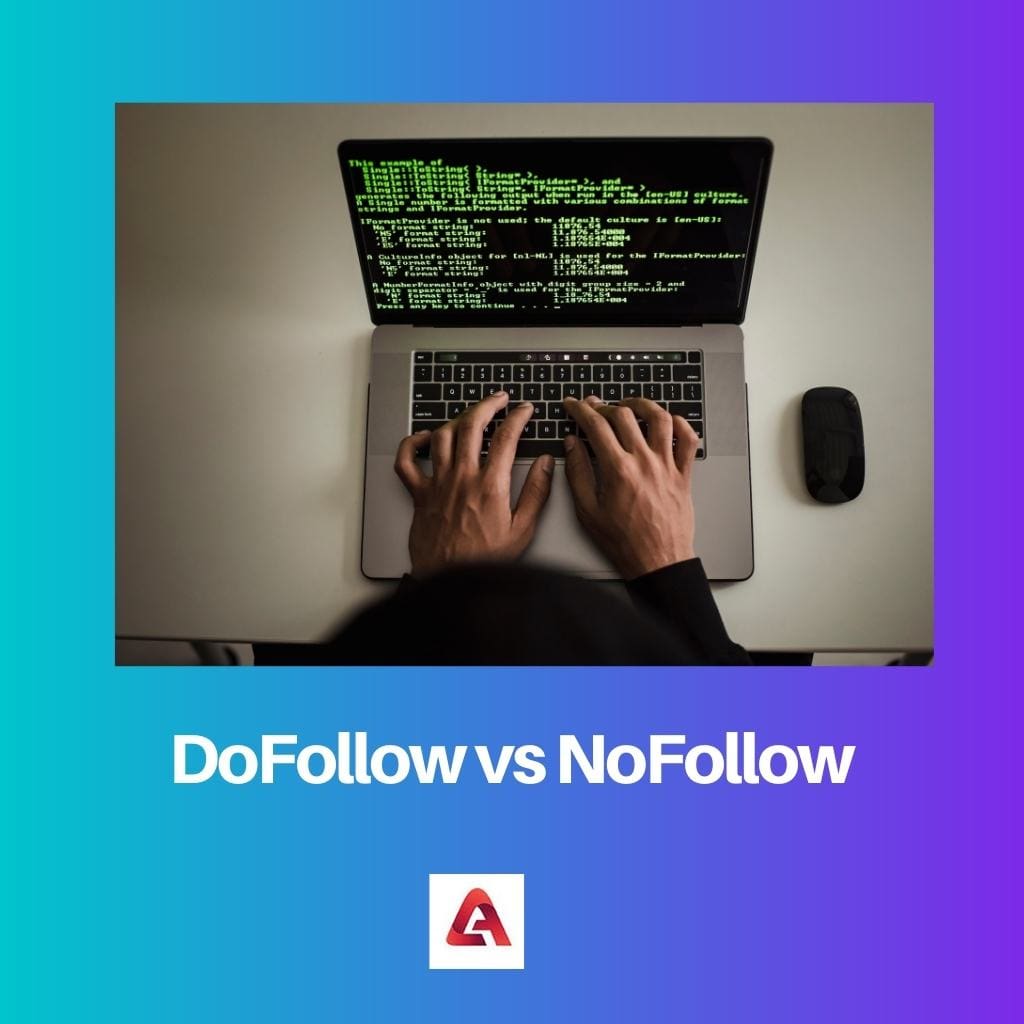SEO or search engine optimization is one of the most imperative knowledge a website owner is must-have. Any substance you seek to put forth on the internet needs to rise in the search index of a search engine.
Common words include an index, nofollow, dofollow, and meta robots.
Matt Cutts and Jason Shellen introduced the concept of Nofollow in 2005. Nofollow, an HTML attribute value, has the task of instructing bots in a program that the presence of a hyperlink isn’t affecting the link target’s ranking within the index of the search engine.
It is intended to minimize the performance of search engine spam.
Key Takeaways
- “Dofollow” links allow search engine bots to follow the links to the destination page, improving the ranking of the linked page in search engine results.
- “Nofollow” links do not allow search engine bots to follow the links, so they do not contribute to the ranking of the linked page. They are used for sponsored or user-generated content to prevent spam and maintain the integrity of search engine results.
- While “dofollow” links are more valuable for SEO purposes, it is important to have a mix of both “dofollow” and “nofollow” links in your backlink profile to maintain a natural link profile and avoid penalties from search engines.
DoFollow vs NoFollow
Dofollow links are hyperlinks that pass link equity, known as PageRank, from one website to another. Search engines consider these links a signal of trust, authority, and quality between websites. Nofollow links are hyperlinks that contain the rel=”nofollow” HTML attribute.

They can only be used when the user doesn’t want to generate a backlink. However, it is a good practice to use both in your content.
Comparison Table
| Parameter of Comparison | Dofollow | Nofollow |
|---|---|---|
| Backlink | With the usage of dofollow links, users can easily create backlinks. | Nofollow links do not generate any backlinks; hence, it is impossible to trace the URL to the website. |
| rel=”nofollow” tag | The major difference between these links is that the dofollow URLs do not contain the rel=”nofollow” tag. | In the case of a nofollow link, it contains the rel=”nofollow” tag, which means there is no chance that it will generate a backlink. |
| Link juice passage | The dofollow link passages the link juice so that the person looking through the website can go through via the backlink. | The no-follow link does not allow the passage of the link juice. |
| Weight | The weight of dofollow links is more in search engine results. They are easily able to pass link juice and create backlinks. | The weight of such links is very lower. This is because they cannot create backlinks and pass link juice. |
| Usage | They can easily increase the ranking of any page they are put in. | They are only beneficial when the users are limited to not passing the link juice but using the URL. |
| Passage of search engine bots | The passage of link juice and the creation of backlinks allows search engine bots to pass through using the URL. | Attributes of Nofollow links do not enable search engine bots to follow the connection. |
What is DoFollow?
Dofollow links allow Google to follow them (all search engines) and find a website, providing a link juice and a backlink. If a webmaster connects you with this page, the search engine and humans can follow you.
Enabling keywords in the anchor text is the perfect way to send anyone do-follow love. This means using the targeted keyword as the anchor text when you connect to some website or article. This is how dofollow links influence SEO.

What is NoFollow?
A nofollow link contains the attribute rel=”nofollow” in its HTML code. This attribute informs search engines not to move authority to the destination page from the link page. As such, from the point of view of SEO, Noffollow links have very little meaning.
It is planned to lessen the viability of particular kinds of internet searcher spam, along these lines improving the nature of web crawler results and forestalling spamdexing from happening in any case.

Main Differences Between Dofollow and Nofollow
- The user can create backlinks. This means that one website, when mentioning the link to another can be visited with the help of a do-follow link. This is very helpful. In the case of nofollow, no backlinks are created. Such links are not very helpful but can be used in many other cases.
- A rel=”nofollow” tag is absent in dofollow links. This means that it can create a backlink to the website it is linked to, making it convenient. Example :<a href=”http://www.google.com/”>Google</a>. But, in the case of nofollow, this tag is present. Therefore, it is not as convenient as the dofollow link. The presence of this tag creates a big difference. Example :<a href=”http://www.google.com/” rel=”nofollow”>Google</a>.
- Link juice passage is allowed in the case of dofollow links. Hence, it is possible to visit the website mentioned in the keyword. Hence, it is quite easily visited. In the case of nofollow links, link juice is not passed. This is why it is not possible to keep track and use backlinking. This is one of the reasons why this link is not convenient. This implies that if the owner of the website links with nofollow attributes back to you, it does not pass on link juice. Only humans may follow these links; hence, it differs from dofollow.
- The weightage that dofollow links carries is very high. These links must be incorporated into the content since they have a high weightage in SEO ranking. Nofollow links do not have much weightage. But, using them is very good practice because they can easily help when the person wants to use links wherein he doesn’t want the link juice to pass through.
- Due to their high weightage and the ability to create backlinks, they are used in practising SEO. This is because their weightage is very much. Such a high weightage means that the more such links the user uses, the better his ranking will be. The nofollow links don’t carry much weight, so their use is mainly user-specific.
- The absence of the rel-”nofollow” tag allows the search engine bots to navigate to the other websites through the target keyword. This is why it can be said that the usage of dofollow links is extremely beneficial to those who want their page to be ranked in the topmost pages of the search engines. At the same time, the presence of this tag means that the search engine bots won’t be allowed to pass through.

This article effectively outlines the main differences between Dofollow and Nofollow links, emphasizing the importance of understanding their impact on search engine optimization.
The absence of rel=nofollow tag in dofollow links enables the creation of backlinks, making them significantly advantageous for SEO purposes.
The comparison table presented here effectively highlights the differences between Dofollow and Nofollow links, aiding in the comprehension of link attributes.
Understanding the significance of Dofollow and Nofollow links can greatly enhance a website’s SEO strategy.
SEO or search engine optimization is an essential aspect of managing a website. The concept of Nofollow and Dofollow is crucial for understanding how search engines index content and generate results.
The role of Nofollow links in reducing the effectiveness of certain types of search engine spam is an important aspect to consider for website management.
This article provides an in-depth analysis of Dofollow and Nofollow links. It’s essential for maintaining a natural link profile and avoiding penalties from search engines.
The distinction between Dofollow and Nofollow links is vital for website owners to comprehend. It’s impressive how these attributes impact search engine rankings.
The distinction in the passage of link juice and utilization of search engine bots between Dofollow and Nofollow links is well-explained in this article.
The significance of keywords in anchor text for creating dofollow links is a valuable insight for improving SEO through effective linking strategies.